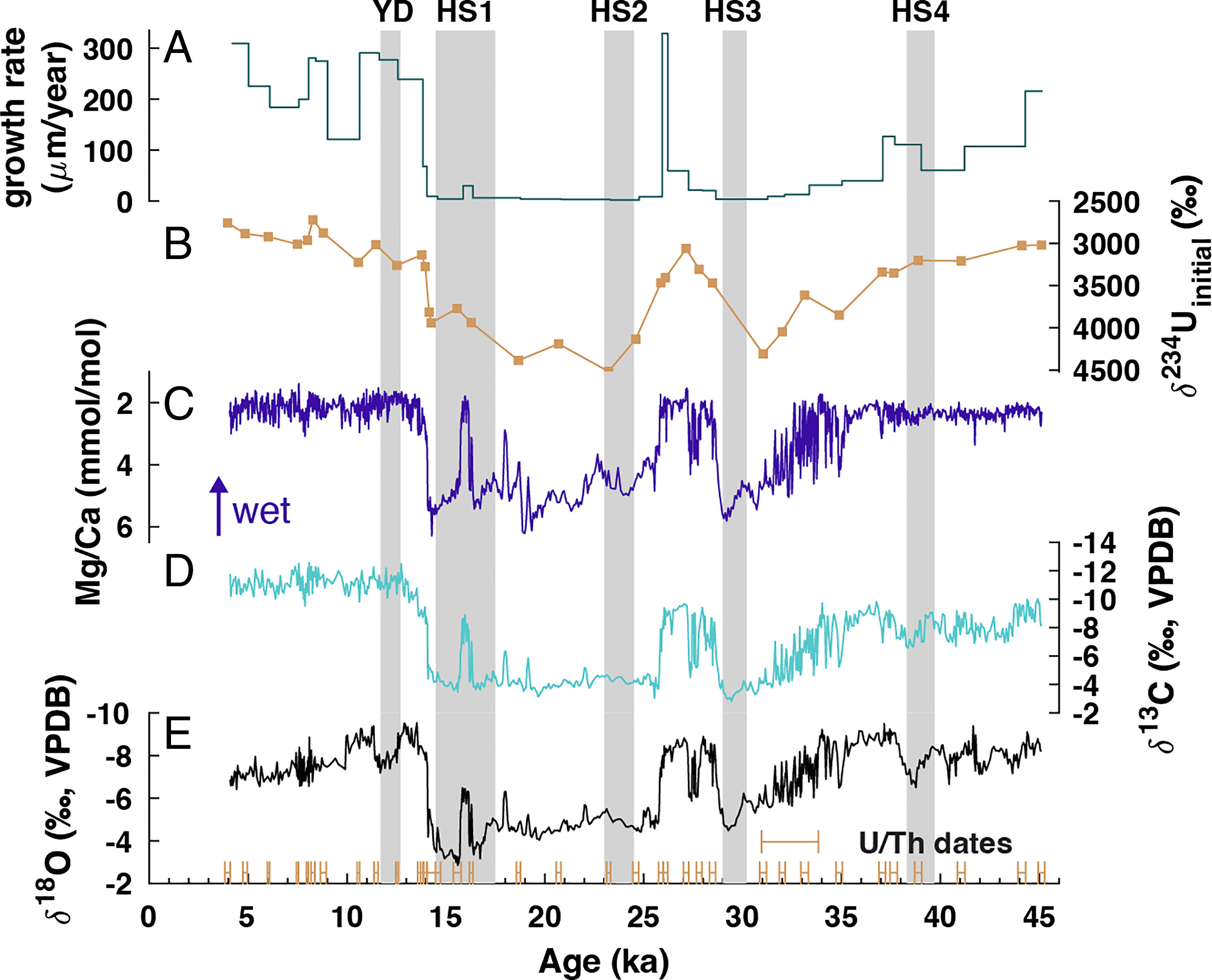2023-06-26 カリフォルニア大学校アーバイン校(UCI)
◆彼らは、ベトナム中部の洞窟から取られた鍾乳石の地球化学的なデータを分析し、過去の水候の変化を解明しました。氷河期の最盛期において乾燥が見られ、氷河の融解による海面上昇によって降雨量が急激に増加し、現在の気候に近い状態になったことが確認されました。
◆この研究は、地球の自然な気候データを活用して過去の気候変動を研究する力を示し、将来の気候変化に関する予測にも役立つとされています。
<関連情報>
- https://news.uci.edu/2023/06/26/uc-irvine-led-study-links-ice-sheet-retreat-with-autumnal-monsoons-in-central-vietnam/
- https://www.pnas.org/doi/10.1073/pnas.2219489120
氷河期の海面変動が東南アジアの秋季モンスーン降雨の数千年規模の変動を変調させた Glacial changes in sea level modulated millennial-scale variability of Southeast Asian autumn monsoon rainfall
Elizabeth W. Patterson,Kathleen R. Johnson,Michael L. Griffiths,Christopher W. Kinsley,David McGee,Xiaojing Du,Tamara Pico,Annabel Wolf,Vasile Ersek,Richard A. Mortlock,Kweku A. Yamoah,Thành N. Bùi,Mùi X. Trần,Quốc Đỗ-Trọng, and Trí V. Võ ,Trí H. Đinh
Proceedings of the National Academy of Sciences Published:June 26, 2023
DOI:https://doi.org/10.1073/pnas.2219489120

Significance
Mainland Southeast Asia is a densely populated region largely devoid of long paleoclimate records. Here, we use a stalagmite from Vietnam to reconstruct Southeast Asian autumn monsoon rainfall variability over the last 45,000 y. We show that sea level, specifically the inundation history of the Gulf of Tonkin and South China Shelf, drove substantial changes in local rainfall. Additionally, we find that autumn rainfall responds to millennial-scale changes of the Atlantic Meridional Overturning Circulation. These findings reveal the considerable variability of the Southeast Asian autumn monsoon, including a propensity for abrupt change. Finally, agreement between our stalagmite record and climate model simulations demonstrates that models correctly capture the main drivers of Southeast Asian autumn monsoon rainfall on millennial-orbital timescales.
Abstract
Most paleoclimate studies of Mainland Southeast Asia hydroclimate focus on the summer monsoon, with few studies investigating rainfall in other seasons. Here, we present a multiproxy stalagmite record (45,000 to 4,000 years) from central Vietnam, a region that receives most of its annual rainfall in autumn (September-November). We find evidence of a prolonged dry period spanning the last glacial maximum that is punctuated by an abrupt shift to wetter conditions during the deglaciation at ~14 ka. Paired with climate model simulations, we show that sea-level change drives autumn monsoon rainfall variability on glacial-orbital timescales. Consistent with the dry signal in the stalagmite record, climate model simulations reveal that lower glacial sea level exposes land in the Gulf of Tonkin and along the South China Shelf, reducing convection and moisture delivery to central Vietnam. When sea level rises and these landmasses flood at ~14 ka, moisture delivery to central Vietnam increases, causing an abrupt shift from dry to wet conditions. On millennial timescales, we find signatures of well-known Heinrich Stadials (HS) (dry conditions) and Dansgaard–Oeschger Events (wet conditions). Model simulations show that during the dry HS, changes in sea surface temperature related to meltwater forcing cause the formation of an anomalous anticyclone in the Western Pacific, which advects dry air across central Vietnam, decreasing autumn rainfall. Notably, sea level modulates the magnitude of millennial-scale dry and wet phases by muting dry events and enhancing wet events during periods of low sea level, highlighting the importance of this mechanism to autumn monsoon variability.




